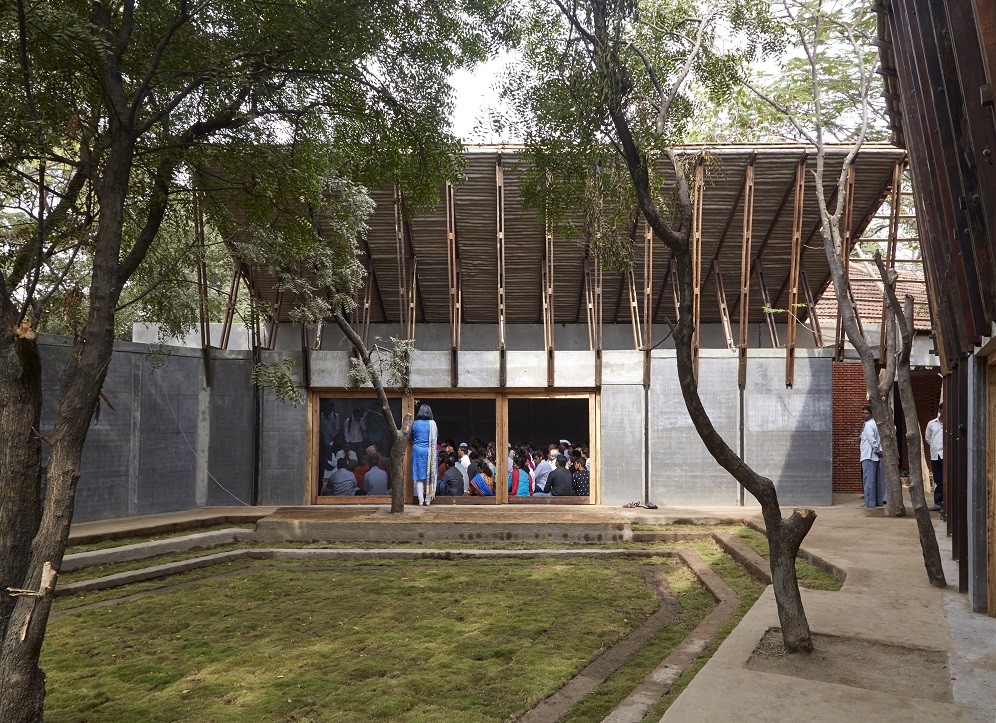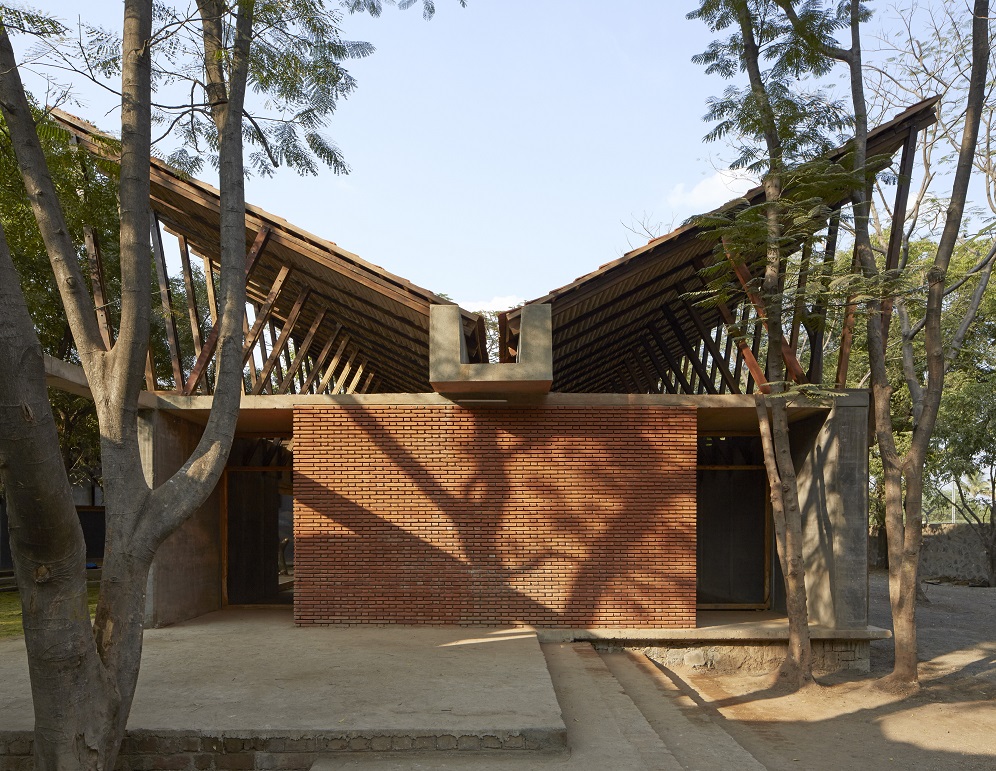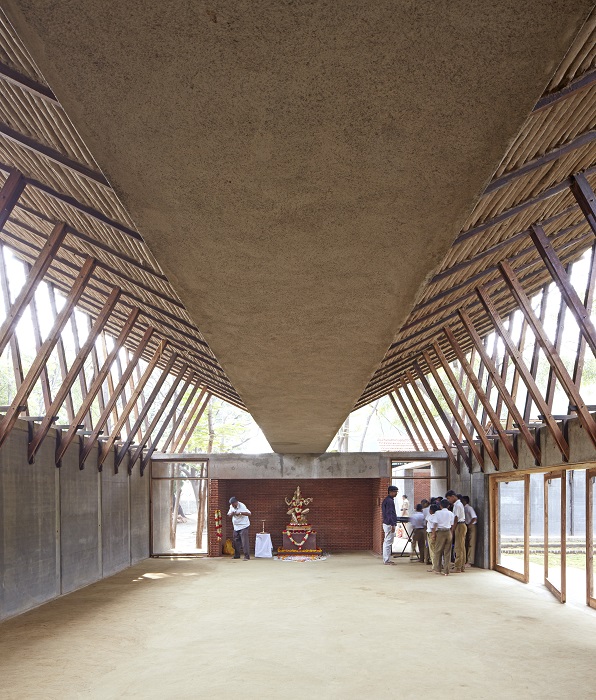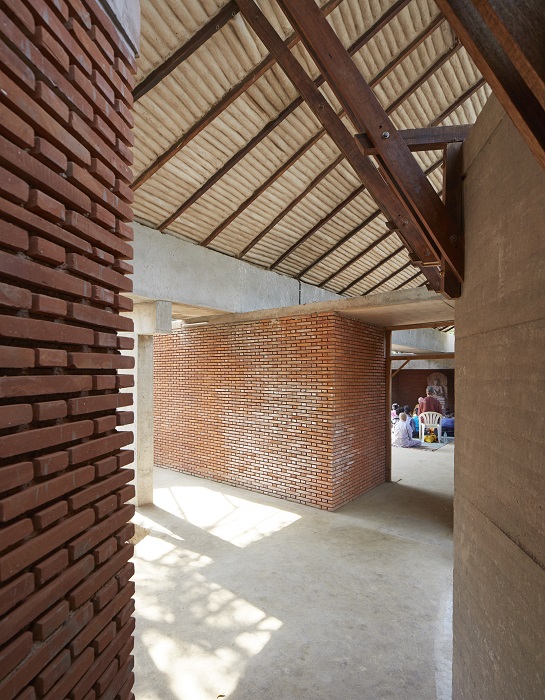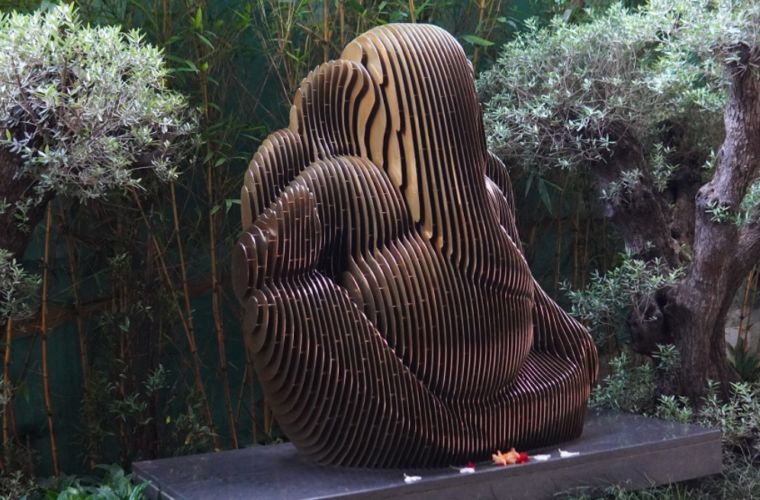Center valley roof profile for Buddhist skill and development center
Photography: Edmund Sumner
Mumbai-based Sameep Padora and Associates has designed the Jetavan, which was to create a skill and development center for a native Buddhist community in rural Maharashtra.
Initiated by the KJ Somaiya Centre of Buddhist Studies, the project was conceptualized when a religious leader decided upon an inclusive center to cater to the community. In Buddhist mythology, the jetvana is the name of one of the Buddha’s important spatial structures. The term translates to the ‘grove of Jeta’, or land donated to the sangha to found a monastery.
Jetavan was built using fly ash and quarry dust for the walls, cow dung for the floor and mud rolls made from used gunny bags placed on wooden rafters from old ships for the roof. Artisans from Hunarshala in Kutch helped build the structure, on a half-acre plot contributed by Godavari Biorefineries while the structure was funded by donors in India and abroad. The Jetavan acts as a spiritual anchor for the Ambedkar Buddhist community through meditation and yoga, while imparting training and skill development.
None of the 40 trees on the site were cut, and the program was split into six buildings each with gaps of heavy planting. Two courtyards link these buildings into a common identity. The roof profile is inverted with a center valley in the middle and rising edges, with interior spaces visually connected to the foliage. The gaps between the roof and the walls offer cross-ventilation, scaling the building towards the courtyard.
Rammed loadbearing walls of basalt stone dust waste was mixed with waste fly ash, both sourced from nearby factories. Repurposed wood from old shipping vessels acts as the roof structure with an understructure of mud rolls, which insulate the structure against weather changes. Clay roof tiles from demolished buildings and a traditional mud and cow dung flooring (containing antiseptic properties) built by the local community, finish off the material palette.


